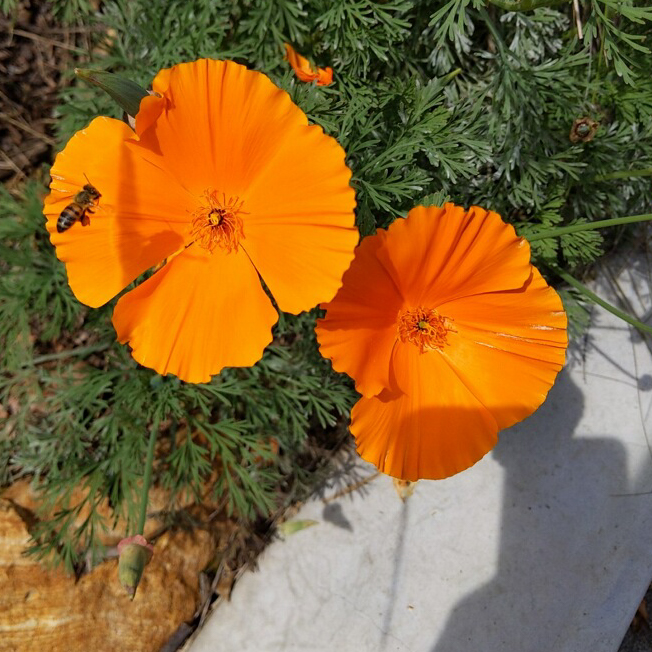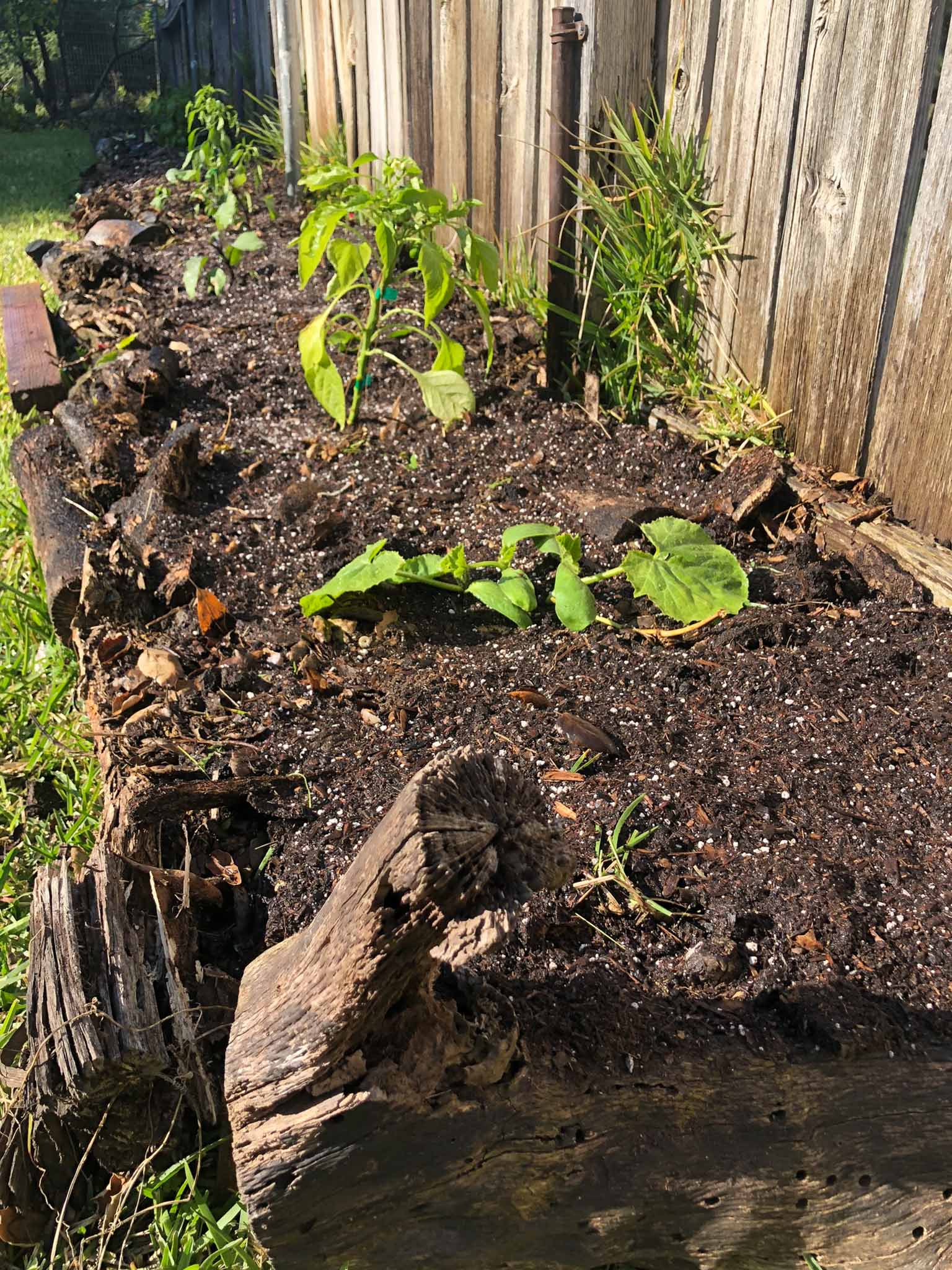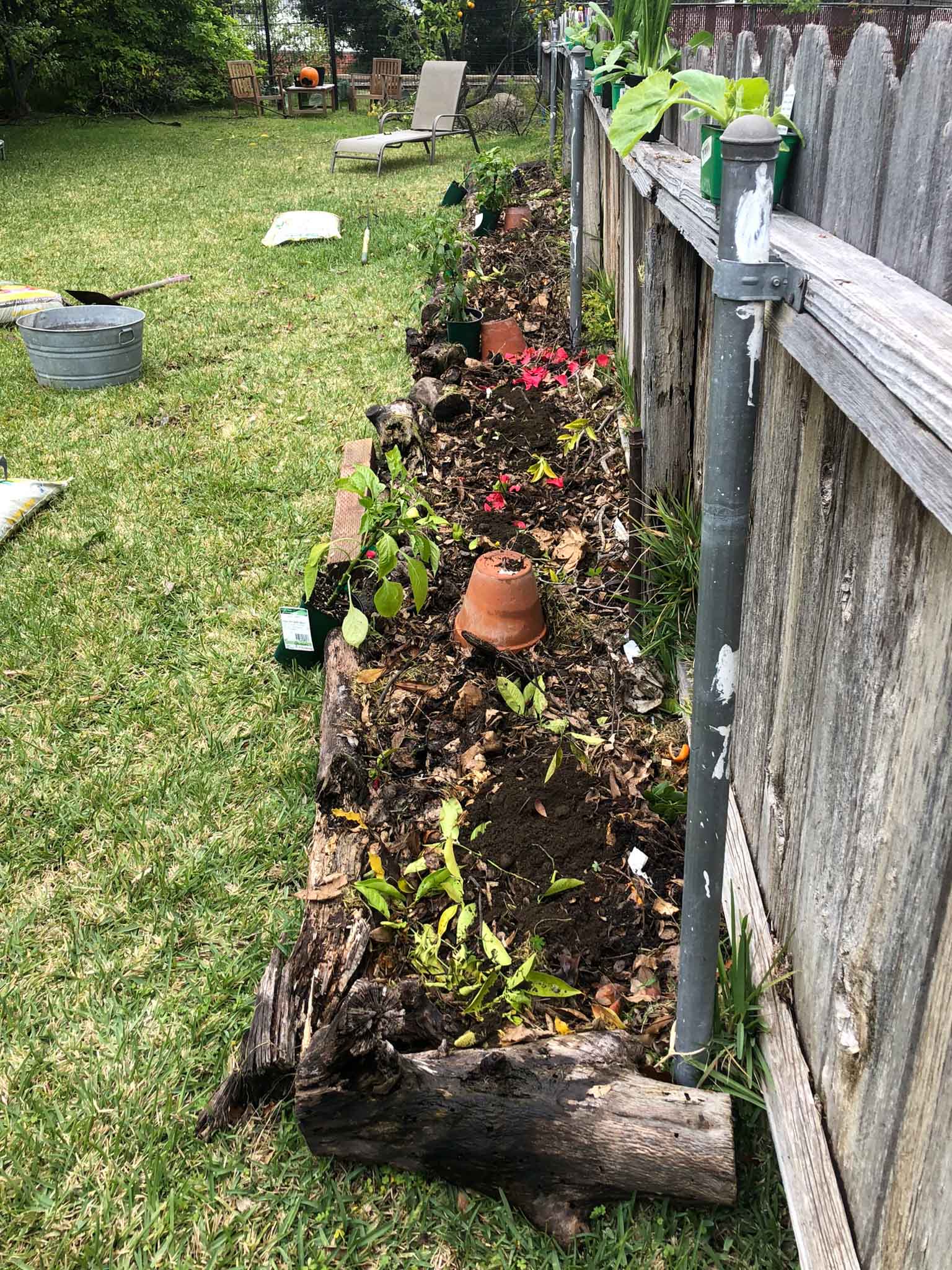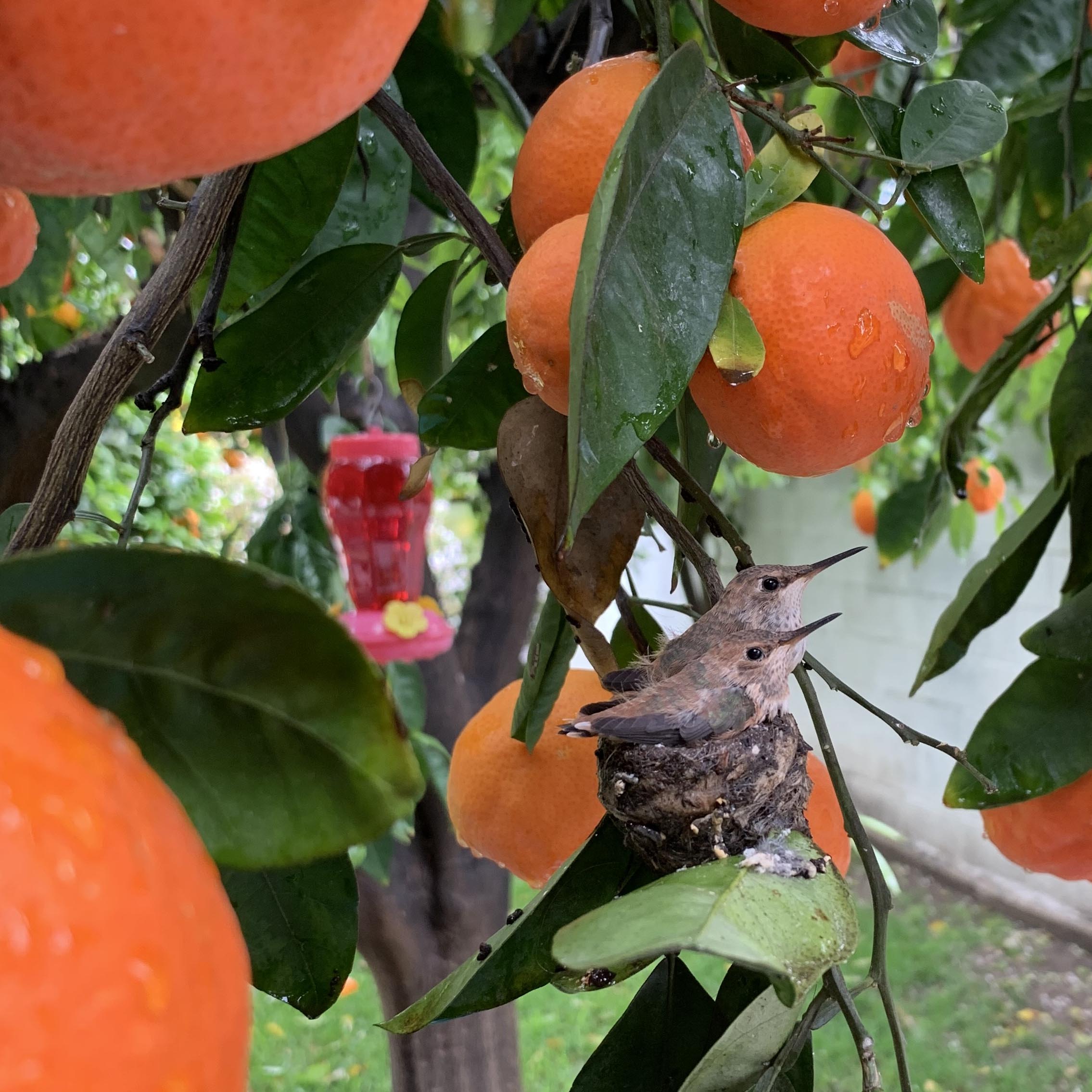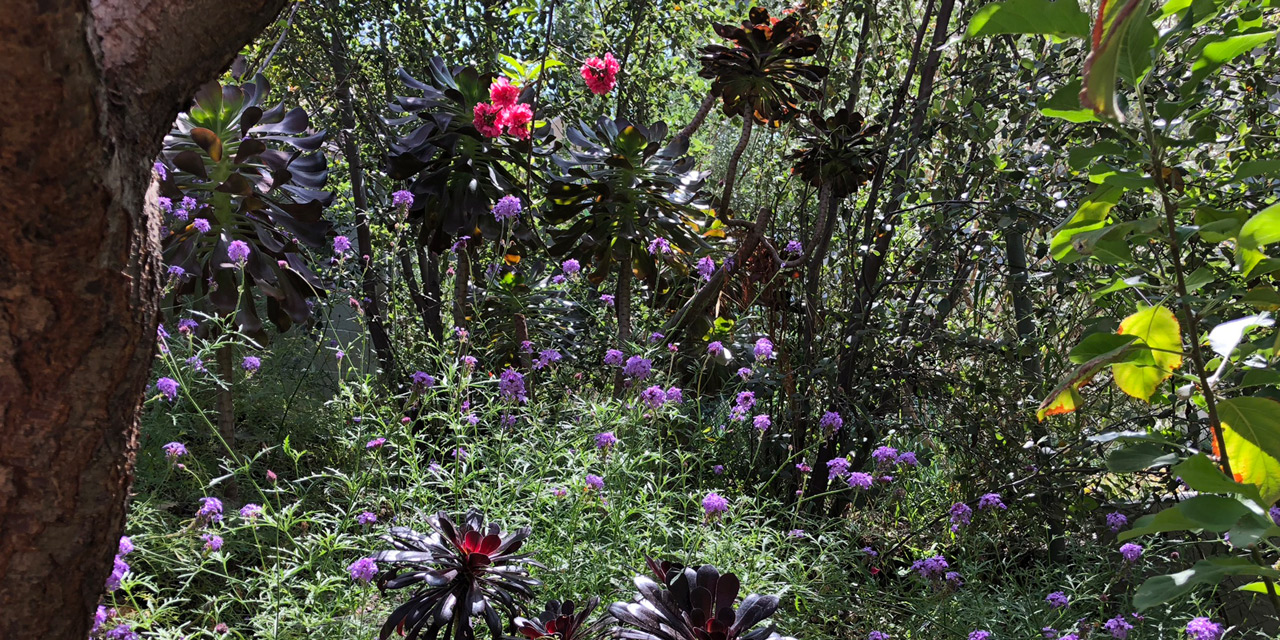
The climate in Southern California allows us to grow native plants, edible plants, and succulents together. This biodiverse garden is low maintenance, low water, and highly beneficial for wildlife and people alike. Plants above: A Native Mountain Mahogany Hedge and Verbena de la Mina commingle with Giant Purple Aeonium and Red Baron Peach tree.
By Elisa Read
The change I hope to see is a Los Angeles with a community-centered society where the garden is truly, finally the heart of the home. Where home garden have veggies spilling down the edges and neighbors share recipes, meals, worm castings, and open play yards. This vision means an environmentally conscious spiritual awakening to make our neighborhoods the multi-cultural, multiracial hub of a sharing and caring society. This already exists in a few pockets of our city and are there to achieve for all if we reach for it. It takes a village; we can and should all do our part to create this utopia.
What keeps me up at night is wondering what it will take to turn the tides to reach a sustainable eco-coconscious existence for Los Angeles, California, and beyond. I’ve spent hours looking at the many angles on how we can harness the potential of our green spaces. From the barren wind-tunnel strips of side yards, to the stressed urban forest, to the vast lands of parks, to the many unbuilt hillside lots, and our wonderful coast line — we are so lucky to have so much opportunity within our city.
I see this world pandemic as a clear and loud message from Mother Nature asking us to wake up. We have been doing too much “undoing” for too long. She needs our respect. She needs us all to think like her — to be stewards of the land we share.
There are principles in gardening based on land stewardship dating back to the agricultural methods of the first in habitants that were focused on local resources and supply as well as respecting native flora, fauna, and its processes. Most importantly this land stewardship follows the seasons (yes, we have seasons). Our Mediterranean Climate has a green/wet and a dry or, what I like to call, California Gold season (Shout out to Huell Howser).
During this crisis, the state of our society-driven world was put on hold by a force of Mother Nature. The stories of wildlife sightings taking back their natural resources are so wonderful and inspiring. There is fascinating data out there tracking the changes on pollution, carbon emission, and even seismic activity — changes that we can not only see, hear, smell, touch but also “live” the difference. It seems that Mother Nature is so generous, she is quickly displaying her gratitude for slowing down and allowing her to heal.
Let's show our respect with a few small changes we can make right now. These changes, if adopted, will continue to make a huge impact in our wildland urban interface and community:
Compost
Anyone and everyone should be composting all kitchen green scraps, and even spent flowers. Even if you don’t have a garden, you can compost. Did you know the City of Los Angeles is set up to take your green kitchen waste in your green bin? If you do have a small or large garden, composting will make a world of difference for your plants and the environment.
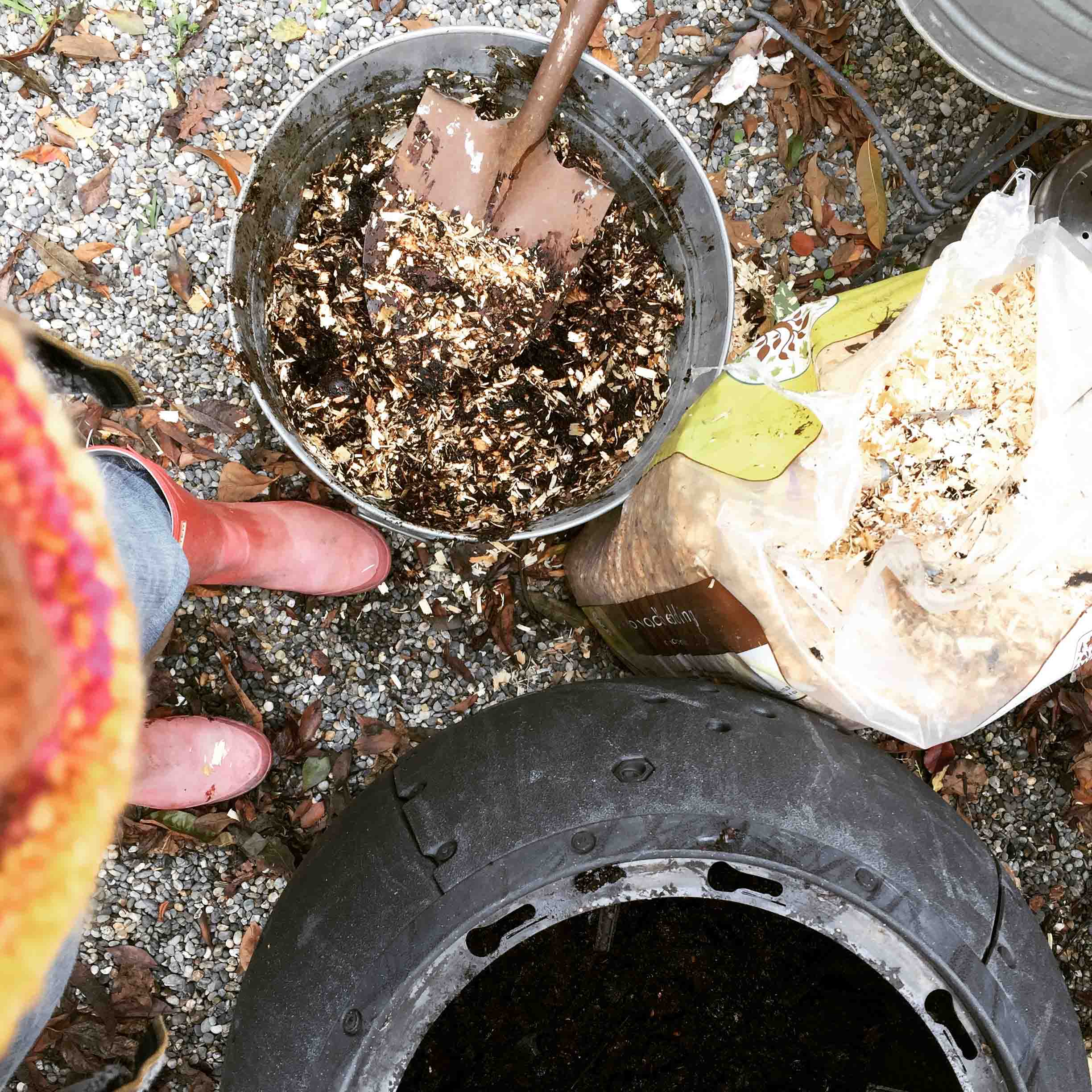
When we rethink the garden, we also think of ways to recycle our compost materials, like using flowers as a compost ingredient.
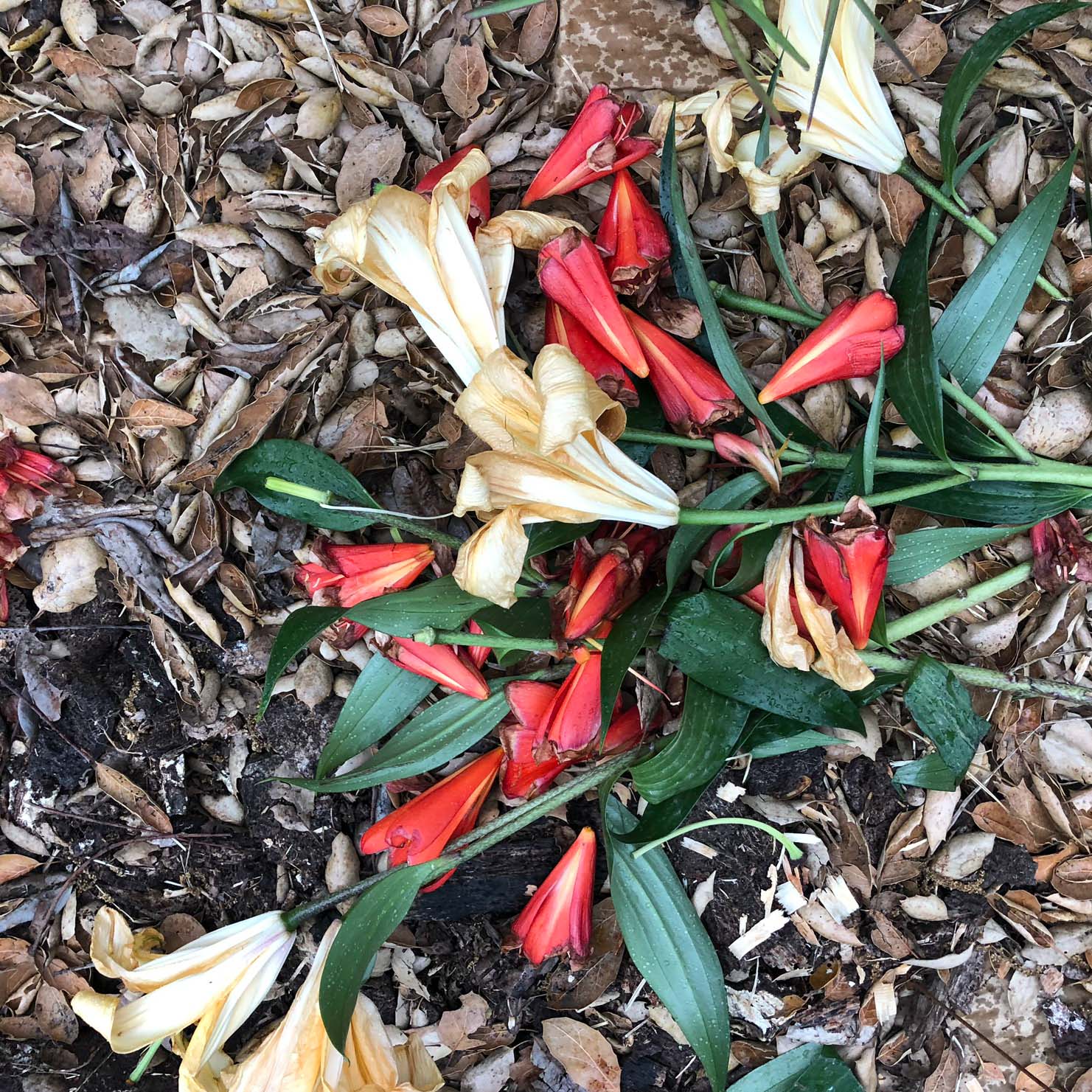
Eliminate leaf blowers
These are banned by many municipalities and cities, yet they are so common, none ever questions their use. The destruction these cause is incredible, from huge carbon emissions, to the disruption of the beneficial bug ecosystem in place, and most important: the dispersal of soil to the air. With a leaf blower you remove Mother Nature’s soil coat. Exposing “its skin” to the hot sun, and drying winds. You dislodge soil, which is rich in carbon, as fine particles of dirty dust. This dusty dirt accumulates in the atmosphere in the form of CO2. Did you know one of the largest producer of CO2 is our industrial-scale agriculture.
Cut your lawn less, much less
When you do cut your lawn, leave no less than 4” long green blades. There are some variety exceptions, but the popular rye and fescue blends and well as St. Augustine can certainly enjoy this length. Also, leave the clippings from the mower on the lawn (take the receptacle bag off while mowing). If you like a tidier look, you may rake the clippings in. These cut blades are made of everything your lawn needs, they will compost and feed back into the roots. We want our lawns to have longer blades because it gives the grass the ability to regulate temperature and moisture, and form deeper roots. This means a reduction on the water need by lawns. Did you know 70% of the water consumption for landscapes in LA is on lawns?
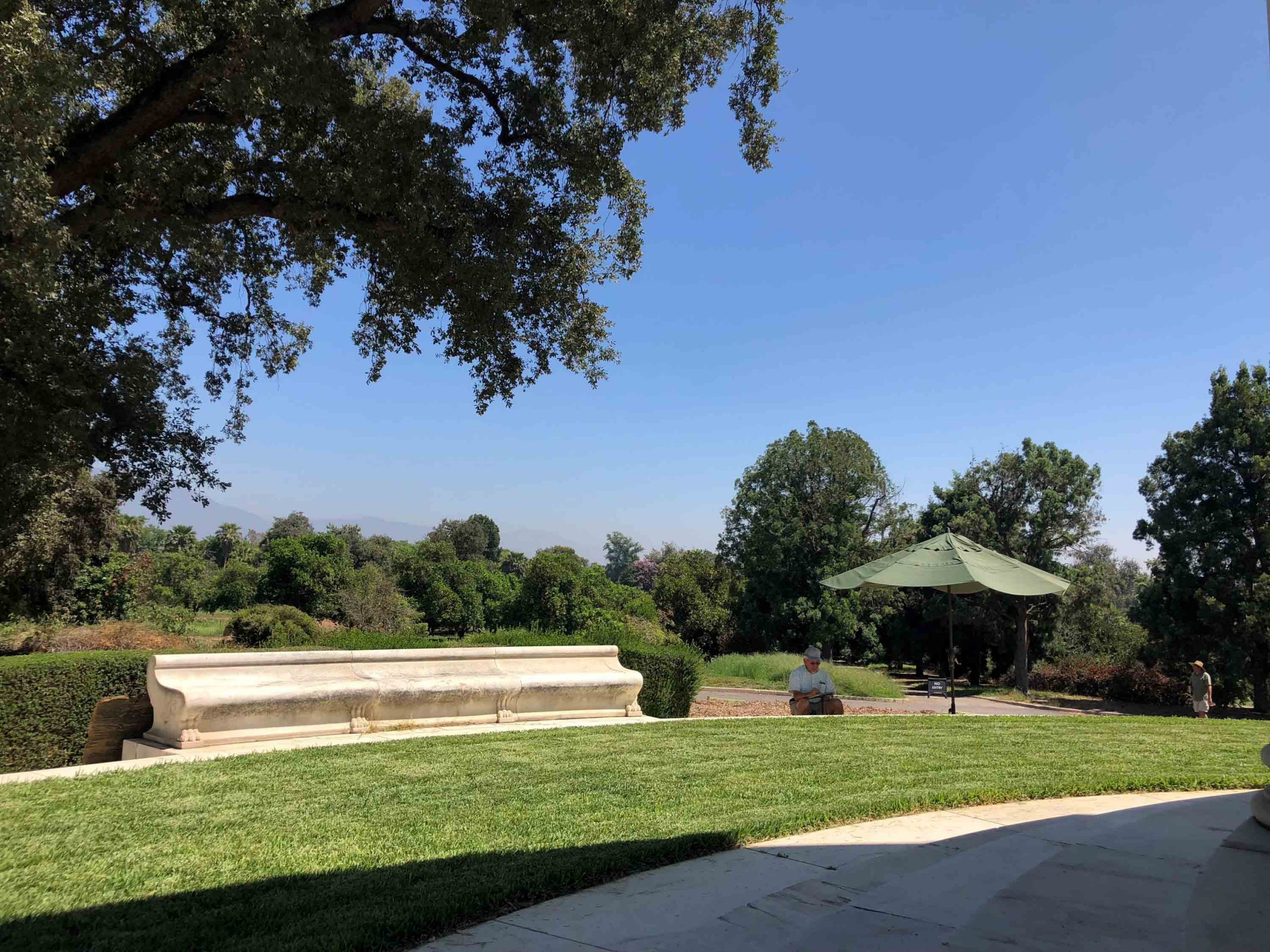
The grass has a healthy under mat before the soil and root level.
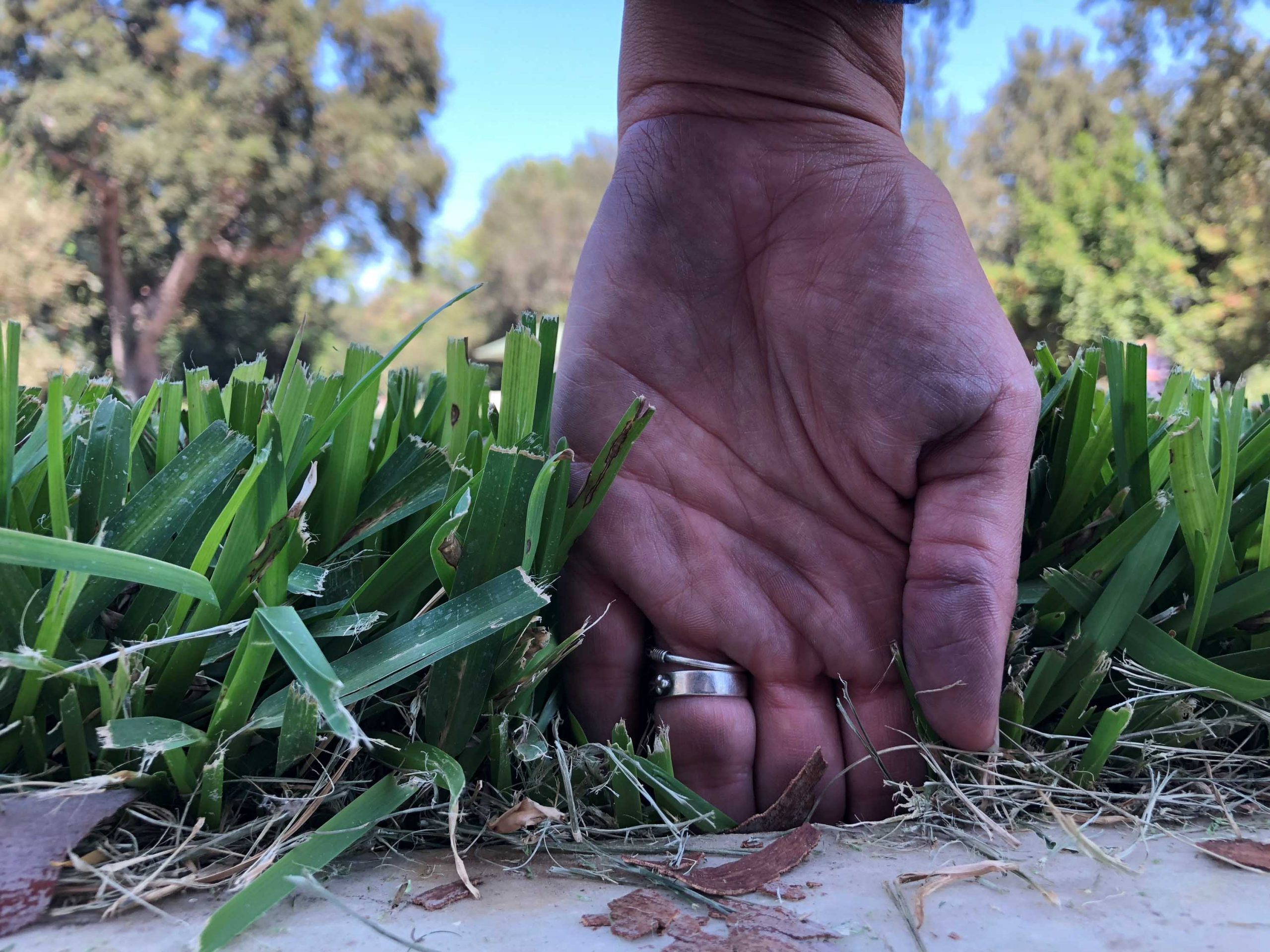
The distance between the tip of Elisa's finger to the top of the lawn blades is 5."
Rethink the purpose of your garden
If we use as much as 70% of our garden water on lawns, why not think of that lawn as a special garden jewel for rest and play and limit its size, pairing it with a growing garden for flowers or food. Find the right size and place for a planting bed, and harness the opportunity to grow beneficial plants for pollinators, shade, and food. Make sure to start with the right foundation by building your soil.
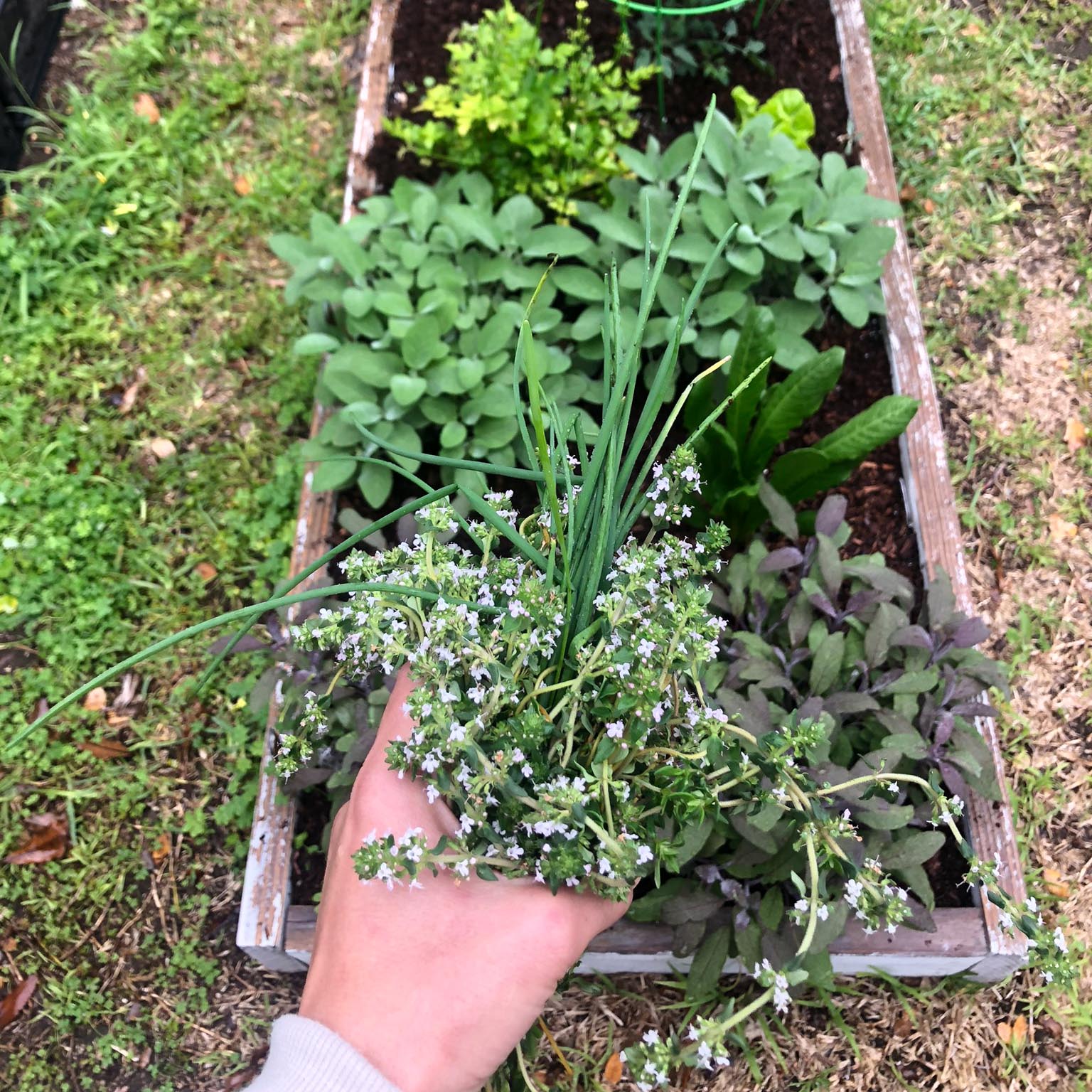
At RIOS, we share a garden culture together by exchanging herbs and fruits regularly.
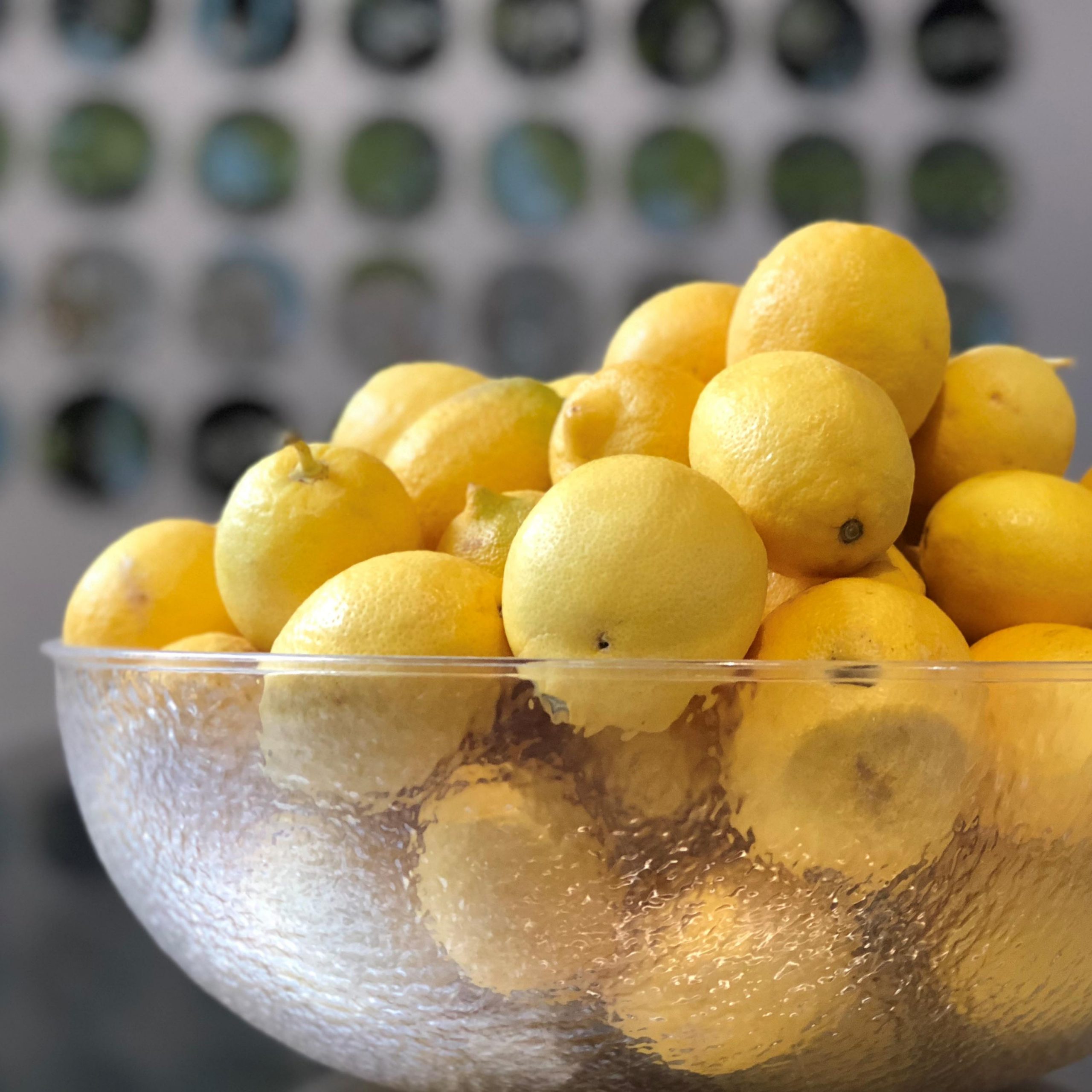
Mulch! Any mulch is better than none.
Per SEC. 12.41.B.7 of the City of Los Angeles Landscape Ordinance, all planted areas should be covered with 3” of mulch. My favorite commercial mulch is 1” minus forest floor shredded bark. As a cost-effective recycling method I use the leaves raked from hard surfaces and apply them as mulch to cover planting areas or bare ground. Instant, free homemade mulch! It renders a forest look, but I love it! My plants require significantly less water and those that were suffering are now thriving. One important thing to note is that you should also leave a patch of dirt in the garden for the many important ground-nesting native bees. Find an inconspicuous corner.
And finally, learn about our local flora and fauna.
Understand that we share this city and its surrounding open spaces. Our fauna also need access to our woodlands and waterways, along with the ability to find food and shelter. I love the iNauturalist app for identifying any living organism you see, Merlin app for birds, Theodore Payne Foundation as well as The Audubon Center have great resources to help familiarize yourself with your natural surroundings and find the right plants for your garden.
